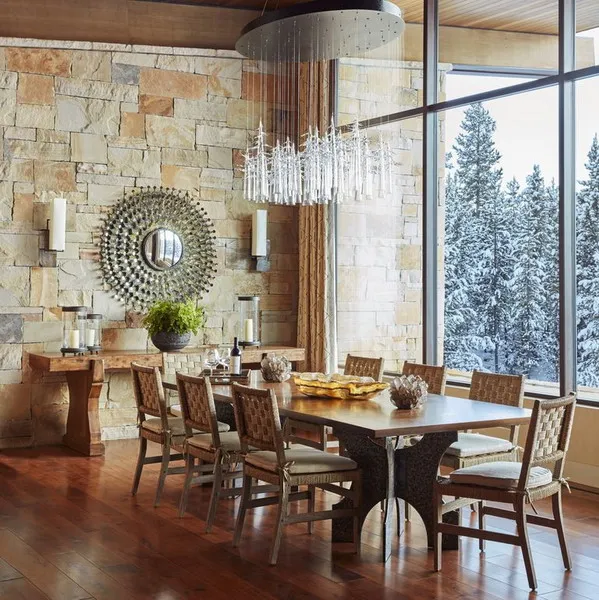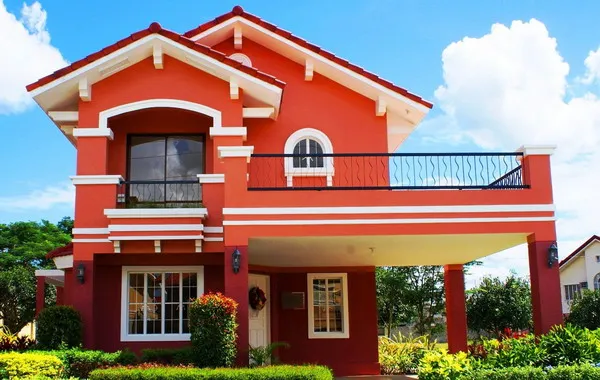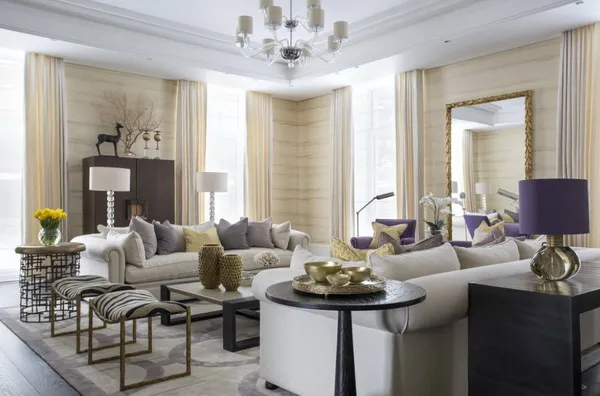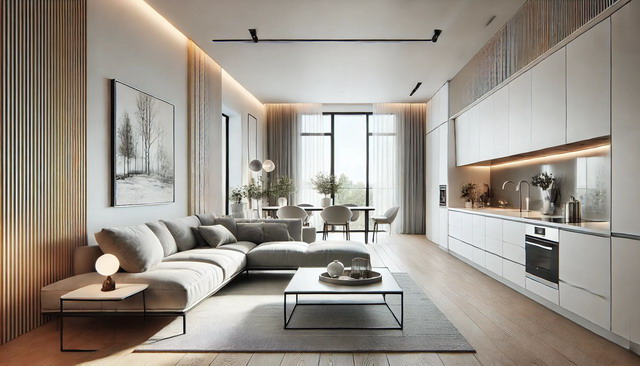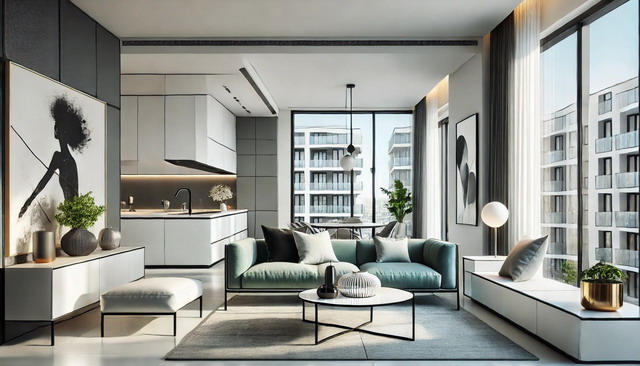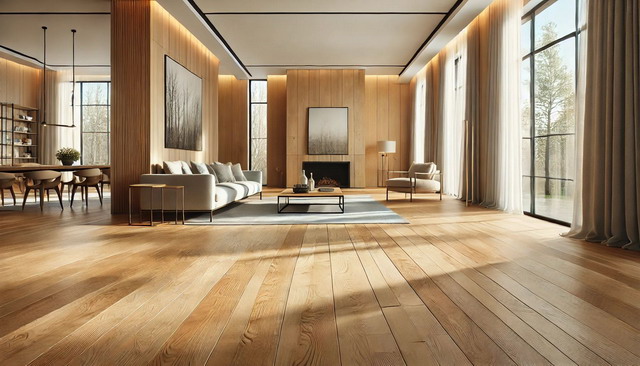Interior Design Trends 2025: Elevate Your Space with Modern Style
Last Updated on September 14, 2024 by Mutiara
The world of interior design is set to undergo a transformation in 2025, as homeowners and designers alike embrace new trends that blend innovation with sustainability and personal expression. In a year where our homes have become more than just places to live—serving as offices, sanctuaries, and creative hubs—interior design is responding to the evolving needs of modern life. From eco-friendly materials and smart home technology to bold colors and global influences, 2025 is all about creating spaces that are functional, aesthetically pleasing, and deeply reflective of individual style.
One of the most significant shifts we’ll see in interior design is a growing focus on sustainability. With climate change and environmental consciousness at the forefront of public discourse, sustainable materials and energy-efficient designs are no longer optional—they’re essential. At the same time, the rise of biophilic design is helping homeowners reconnect with nature, incorporating natural elements like plants, light, and organic materials to create calming, wellness-centered spaces.
But 2025 is also a year of bold choices. Minimalism is taking on a new, luxurious edge, with rich textures and high-end finishes redefining simplicity. Smart technology is seamlessly integrated into our homes, making everyday life more convenient and efficient, while vintage and retro styles bring a nostalgic charm to modern interiors. And as the world becomes more connected, cultural influences are playing a more prominent role in shaping design, celebrating the diversity of global traditions through unique patterns, materials, and motifs.
Whether you’re looking to refresh your home with sustainable choices, embrace the latest smart tech, or express your personality through bold colors and custom furniture, 2025 offers endless possibilities for creating spaces that feel both timeless and forward-thinking. Join us as we explore the key interior design trends for the year ahead, each one offering a glimpse into the future of how we live, work, and play in our homes.
1. Sustainable Interior Design for 2025: Where Eco-Friendly Meets Aesthetic Innovation
The year 2025 is shaping up to be a turning point for sustainable interior design, as eco-conscious living becomes more than just a trend—it’s a lifestyle choice. Interior designers and homeowners alike are gravitating towards materials, designs, and practices that honor the environment while maintaining a sophisticated aesthetic. With the growing awareness of climate change, deforestation, and the need for responsible consumption, sustainable interior design is no longer an afterthought, but a primary focus.
The sustainability movement is influencing every element of interior design, from the materials used to the overall structure of spaces. It’s not just about using “green” materials but creating spaces that reduce waste, conserve energy, and improve indoor air quality—all while being visually appealing and functional. This shift is empowering consumers to make informed choices that reflect their values and minimize environmental impact. Here’s how 2025 will see sustainable design as the new standard.
1. Eco-Friendly Materials That Transform Spaces
When we talk about sustainable interior design, one of the most significant aspects is the use of eco-friendly materials. These materials—like bamboo, reclaimed wood, cork, and recycled metal—are sustainable not only because of how they’re sourced, but also because of their longevity and minimal environmental footprint. Gone are the days when eco-friendly materials were seen as utilitarian or lacking in aesthetic value. Designers today are experimenting with these resources in new, creative ways that elevate their look without compromising sustainability.
Bamboo, for example, is fast-growing and highly renewable, making it an ideal choice for flooring and furniture. It’s lightweight yet durable and offers a clean, modern aesthetic. Meanwhile, reclaimed wood brings a sense of history and warmth into any space, offering character that new wood often lacks. The weathered texture and unique grain patterns of reclaimed wood add charm to everything from tabletops to flooring, helping reduce the demand for newly harvested trees.
Cork is another material rising in popularity, known for its insulating properties and sustainability. Cork can be used for flooring, wall coverings, and even furniture, and it has a softness underfoot that adds comfort to any home. Additionally, recycled metal is finding its way into lighting fixtures, countertops, and even furniture, giving homes an industrial edge while being resource-efficient.
These eco-friendly materials are not just good for the environment—they’re versatile and customizable. In 2025, we’ll see more creative uses of these materials, proving that sustainability and design innovation can coexist harmoniously.
2. Biophilic Design: Bringing Nature Indoors for Wellbeing
The biophilic design trend is one of the most compelling movements in interior design for 2025, bringing nature into the home in ways that foster both aesthetic beauty and mental wellbeing. Rooted in the idea that humans have an innate connection to the natural world, biophilic design seeks to integrate natural elements into indoor environments to create spaces that feel calm, nurturing, and grounded.
With more people spending time indoors due to remote work and changing lifestyles, the need for restorative, nature-inspired spaces has never been greater. Biophilic design answers this need by incorporating plants, natural light, water features, and organic materials to blur the lines between indoor and outdoor living.
One of the primary ways designers are achieving this is through living walls—vertical gardens that not only add a visual focal point but also improve air quality and reduce stress. These lush, green installations have become increasingly popular in urban homes where outdoor space may be limited, offering a slice of nature within the confines of a modern home. From moss walls to cascading vines, living walls come in various styles and sizes, allowing homeowners to customize the look and feel to their preferences.
Natural light is another key component of biophilic design. In 2025, expect to see homes designed to maximize daylight, whether through larger windows, skylights, or open-concept layouts. Natural light not only makes spaces feel brighter and more expansive, but it also has a profound impact on mood and energy levels. Designers are embracing the idea that homes should be sanctuaries of wellbeing, where light plays a central role in creating a harmonious atmosphere.
The use of organic materials—such as wood, stone, and clay—further enhances the biophilic feel. These materials bring warmth and texture to a space, offering a tactile connection to the natural world. Imagine a home with smooth wooden countertops, stone accent walls, and clay pottery scattered throughout. These elements ground the space, making it feel more connected to the earth.
Additionally, water features are becoming a popular way to introduce a sense of tranquility into homes. From indoor fountains to reflecting pools, the sound and sight of water create a calming environment that can help reduce anxiety and promote relaxation. It’s no surprise that biophilic design is being embraced by wellness-conscious homeowners looking to create spaces that support mental health and wellbeing.
But biophilic design is about more than just aesthetics—it’s also deeply functional. For instance, integrating natural ventilation systems alongside plants can help purify indoor air, creating a healthier living environment. The plants absorb pollutants and release oxygen, improving air quality naturally. In 2025, expect to see more homes designed with these elements in mind, as architects and designers recognize the importance of wellness-centered spaces.
2. The Intersection of Sustainability and Biophilic Design
What’s particularly exciting about the convergence of sustainable and biophilic design is how these trends support one another. By using eco-friendly materials and natural elements, designers can create homes that not only look beautiful but are also good for the environment and the people who live in them. For instance, reclaimed wood and natural stone, both sustainable choices, can be used to enhance biophilic designs by adding texture and warmth. Additionally, incorporating plants and natural light into a space helps reduce energy consumption, making homes more sustainable overall.
As we move towards 2025, the interior design industry is recognizing that sustainability and biophilia are not just passing trends—they are integral components of the future of design. Together, they reflect a deeper shift in how we think about our homes, our health, and our planet. Sustainable and biophilic design offer a blueprint for creating living spaces that are not only beautiful and functional but also responsible and restorative.
Interior design in 2025 will be about more than just aesthetics—it will be about making mindful choices that honor both the environment and our intrinsic need for connection to nature. Whether through eco-friendly materials or nature-inspired spaces, the homes of the future will be sanctuaries of sustainability, wellness, and innovation.
3. Minimalist Yet Luxurious Interiors: The Art of Refined Simplicity
Minimalism is evolving in 2025, and it’s no longer about cold, stark spaces that feel empty or impersonal. Instead, the minimalist movement is taking on a luxurious twist, balancing simplicity with opulence in a way that feels inviting and refined. This trend is about stripping away excess while introducing high-quality, luxurious elements that add depth, texture, and richness to a space.
The key to this look is intentionality. Every piece of furniture, every texture, and every color is chosen with care, serving a purpose beyond mere decoration. Luxury minimalism is all about creating a harmonious, uncluttered environment that exudes elegance without overwhelming the senses.
One of the biggest shifts in 2025’s minimalist design is the introduction of luxurious materials—think rich velvets, marble, and brass details. These high-end materials are used sparingly but effectively, elevating the overall aesthetic without feeling ostentatious. For instance, a minimalist living room might feature a sleek velvet sofa in a deep jewel tone, complemented by a simple marble coffee table and understated brass accents. The result is a space that feels calm and serene, yet undeniably sophisticated.
Neutral color palettes remain a core element of minimalist interiors, but in 2025, we’re seeing more variety within these neutrals. Warm tones like taupe, soft beige, and creamy white are replacing the harsh whites and grays of the past, creating a more inviting atmosphere. These warmer neutrals provide a canvas for luxurious materials to shine, allowing them to be the focal point without overwhelming the room.
Functional furniture plays a critical role in this trend. In 2025, homeowners are looking for pieces that not only look good but also serve a purpose. Multi-functional furniture—such as beds with built-in storage or sleek modular sofas that can be rearranged—fits perfectly into this philosophy. It’s about reducing clutter and enhancing practicality while maintaining an air of sophistication.
Finally, minimalist yet luxurious interiors emphasize clean lines and open spaces, creating a sense of order and calm. Instead of filling rooms with furniture and décor, this style encourages empty space as a design element in itself, allowing the few luxurious pieces in the room to stand out. This “less is more” approach highlights the beauty of high-quality craftsmanship and timeless design.
4. Smart Home Integration and Intelligent Design: The Future of Connected Living
As technology continues to advance, smart home integration is becoming an essential component of modern interior design. By 2025, intelligent design is no longer a futuristic concept—it’s a reality in many homes, enhancing convenience, security, and energy efficiency. Smart technology is seamlessly woven into the fabric of our living spaces, making our homes more intuitive, responsive, and personalized than ever before.
Smart lighting is one of the standout features in this new wave of interior design. Homeowners can now control the ambiance of their space with the touch of a button—or even with their voice. Whether it’s dimming the lights for a cozy evening or changing the color temperature to match the time of day, smart lighting systems offer unparalleled flexibility. The integration of voice assistants like Amazon Alexa, Google Home, and Apple’s Siri allows for effortless control, making the entire lighting experience customizable and convenient.
But smart home technology goes beyond lighting. Smart thermostats are helping to revolutionize how we heat and cool our homes. These devices learn a household’s habits and adjust the temperature accordingly, ensuring maximum comfort while minimizing energy consumption. By 2025, we’re seeing more homes equipped with systems like Nest or Ecobee, which not only save money on energy bills but also contribute to a more sustainable living environment.
Security is another major focus in smart home design. Smart locks, cameras, and doorbells offer peace of mind by allowing homeowners to monitor their property in real-time, even when they’re away. Many of these systems are connected to mobile apps, enabling users to lock doors, check camera feeds, or receive notifications of unusual activity—all from their smartphones. This level of integration provides a heightened sense of security without compromising on style, as many of these smart devices are designed to be sleek and unobtrusive.
Finally, smart appliances are transforming the kitchen and bathroom spaces in innovative ways. From refrigerators that notify you when you’re running low on groceries to washing machines that can be programmed remotely, smart appliances make daily tasks more efficient. In the bathroom, smart showers and mirrors are becoming increasingly popular, offering features like water temperature presets and integrated Bluetooth speakers for a spa-like experience at home.
As we move into 2025, it’s clear that smart home technology is becoming a seamless part of interior design. It’s not about having a home full of gadgets, but rather about how these technologies are integrated into the space to enhance daily life. From smart lighting to intelligent security systems, technology is reshaping how we interact with our homes, making them more responsive, efficient, and enjoyable to live in.
5. Bold Colors and Personalized Spaces: Express Yourself Through Design
While minimalism and neutral tones are dominating certain aspects of interior design in 2025, there’s also a bold, expressive counter-trend gaining traction: personalization through color. Homeowners are moving away from cookie-cutter designs and embracing their unique style with bold colors and custom-made furniture. In a world that’s increasingly mass-produced, people are seeking ways to make their homes feel distinctly their own.
One of the key color trends in 2025 is the use of rich, saturated hues. Jewel tones like emerald green, sapphire blue, and ruby red are making a big comeback, bringing vibrancy and personality to spaces. These bold colors are often used as statement walls, on furniture pieces, or through accent décor. For example, an emerald green velvet sofa can instantly become the centerpiece of a living room, adding depth and luxury to an otherwise neutral space.
Another exciting color trend is the use of unexpected combinations. Homeowners are becoming more adventurous with how they pair colors, mixing tones that traditionally wouldn’t go together to create something fresh and unique. Think soft blush pinks combined with mustard yellow or deep indigos paired with coral. These combinations inject energy into a space and make a strong visual statement, turning rooms into expressions of individuality.
Beyond color, personalization is also evident in the rise of custom-made furniture. Rather than relying on mass-market retailers, more people are investing in bespoke pieces that reflect their tastes and needs. Whether it’s a handcrafted dining table, a tailor-made bookshelf, or a one-of-a-kind art piece, these elements add a sense of uniqueness and exclusivity to the home. By investing in custom furniture, homeowners are creating spaces that feel personal and intimate, rather than generic.
Personalized spaces also extend to how rooms are used. In 2025, interior design is focusing more on functionality tailored to lifestyle. For instance, a home office might double as a yoga studio, or a living room could be reconfigured into an entertainment hub. The goal is to make homes adaptable to the needs of those who live in them, ensuring that every corner of a space is optimized for comfort and functionality.
In essence, the trend of bold colors and personalized spaces is about self-expression. Homeowners are no longer content with following the latest design fad—they want their homes to reflect who they are. Whether through bold color choices, custom furniture, or multi-functional layouts, 2025 is the year to embrace individuality and create spaces that feel truly personal.
The interior design trends of 2025 are an exciting blend of innovation, personalization, and luxury. From minimalist yet opulent interiors to smart home integration and bold color choices, this year promises to redefine how we live and interact with our spaces.
6. Vintage and Retro Revival: A Nostalgic Twist on Modern Interiors
As 2025 approaches, there’s a growing nostalgia for the styles of the past, with vintage and retro designs making a strong comeback in modern interiors. Far from being outdated, these design elements are being reimagined in fresh, creative ways, blending the charm of bygone eras with contemporary sensibilities. The vintage and retro revival is all about celebrating the timelessness of classic design while infusing it with modern functionality and flair.
Mid-century modern furniture, characterized by clean lines, organic curves, and minimalist aesthetics, continues to be a dominant influence in vintage design. These pieces offer a sense of nostalgia while fitting seamlessly into modern homes. Iconic items such as the Eames chair, tulip tables, and tapered-leg furniture are still widely sought after, but they’re now being paired with more contemporary elements, like sleek lighting fixtures or abstract artwork, to create a balanced, eclectic look.
Retro colors and patterns are another defining feature of this trend. Bold, geometric patterns inspired by the 1960s and 1970s are finding their way onto wallpaper, upholstery, and floor tiles, adding a playful and vibrant vibe to interiors. Colors such as mustard yellow, avocado green, and burnt orange are making a resurgence, often used as accent colors to bring warmth and personality to a space. These bold hues create focal points that draw the eye, adding depth and dimension to rooms.
Repurposing vintage items is also becoming more popular as homeowners look for ways to incorporate unique, sustainable elements into their spaces. Vintage markets and secondhand stores are treasure troves of one-of-a-kind pieces that can be reupholstered, refinished, or repurposed to suit modern tastes. Whether it’s a vintage chest of drawers transformed into a bathroom vanity or an old industrial lamp retrofitted with modern wiring, these items add character and history to a home, making it feel more personal and distinctive.
In 2025, vintage and retro design is all about creating a sense of warmth, nostalgia, and individuality. By mixing old and new, homeowners can craft spaces that feel timeless yet thoroughly modern, combining the best of both worlds.
7. Multifunctional Spaces for Compact Living: Maximizing Every Square Foot
As urbanization continues to rise, so does the need for smart, space-saving design solutions. In 2025, compact living isn’t just a necessity for city dwellers—it’s an art form. Multifunctional spaces are becoming the new norm as homeowners seek to make the most of limited square footage without sacrificing style or comfort. The result is a wave of innovative designs that prioritize flexibility, adaptability, and efficiency.
Modular furniture is at the forefront of this trend, offering versatility and functionality for small spaces. Modular sofas that can be rearranged into different configurations, fold-out beds that disappear into the wall, and dining tables that expand or contract based on need are just a few examples of how furniture is evolving to meet the demands of compact living. These pieces are not only space-saving but also stylish, allowing homeowners to transform their spaces quickly and effortlessly.
Another hallmark of multifunctional spaces is open-plan living, where walls are removed to create fluid, adaptable spaces. By blurring the boundaries between the kitchen, living room, and dining area, homeowners can create a sense of openness and flow, making even the smallest spaces feel larger and more inviting. In 2025, this approach is being enhanced with movable partitions and sliding doors, which allow spaces to be reconfigured based on the task at hand. For example, a home office can be closed off for privacy during work hours but opened up to the living room during leisure time.
Storage solutions are also being revolutionized, with built-in shelves, under-bed storage, and wall-mounted units becoming essential components of compact living. These clever designs help reduce clutter, ensuring that every square foot of space is used efficiently. In the kitchen, pull-out pantry shelves, hidden drawers, and vertical storage racks keep the area organized and functional, while in the bedroom, under-bed storage and built-in closets maximize floor space.
Finally, multifunctional spaces are increasingly being designed with sustainability in mind. By investing in furniture that serves multiple purposes and using eco-friendly materials, homeowners can reduce their environmental footprint while enjoying the benefits of a more flexible and efficient living environment. Compact living is not just about squeezing into small spaces; it’s about designing smarter, more sustainable homes that adapt to the needs of modern life.
8. Sustainable Lighting Solutions: Illuminating the Future of Interior Design
Lighting has always been a crucial element of interior design, but in 2025, the focus is shifting towards sustainability and energy efficiency. As homeowners become more eco-conscious, the demand for lighting solutions that are both functional and environmentally friendly is on the rise. Sustainable lighting is about more than just reducing energy consumption—it’s about enhancing the ambiance of a space while contributing to a healthier planet.
LED technology continues to lead the charge in sustainable lighting. LED bulbs use significantly less energy than traditional incandescent bulbs, last longer, and are available in a wide range of styles and color temperatures. Whether it’s soft, warm lighting for a cozy living room or bright, cool lighting for a kitchen, LED bulbs offer versatility and efficiency, making them the go-to choice for environmentally conscious homeowners. In 2025, expect to see more homes equipped with smart LED lighting systems, which can be controlled remotely to adjust brightness, color, and even timing, further optimizing energy use.
Natural light is another important aspect of sustainable lighting design. Homes are being designed to maximize daylight exposure, with larger windows, skylights, and strategically placed mirrors helping to reflect light and brighten spaces naturally. In 2025, biophilic design principles are playing a key role in this trend, with architects incorporating features like light wells and solar tubes to bring more natural light into interior spaces. Not only does this reduce the need for artificial lighting, but it also has positive effects on mood and wellbeing.
Solar-powered lighting is becoming more popular, particularly for outdoor spaces like patios and gardens. These systems harness energy from the sun during the day and use it to power lights at night, offering a sustainable, cost-effective solution for exterior illumination. Solar lighting is not only good for the environment, but it’s also easy to install and maintain, making it an attractive option for eco-conscious homeowners.
In addition to energy efficiency, sustainable lighting is also focusing on the quality of light and its impact on health. In 2025, we’ll see a growing interest in circadian lighting, which mimics the natural progression of daylight to support the body’s sleep-wake cycle. These systems adjust the color temperature and brightness of light throughout the day, promoting better sleep patterns, increased productivity, and overall wellbeing. This is particularly important in home offices and living spaces, where artificial lighting can disrupt the body’s natural rhythms.
The push towards sustainable lighting solutions is not just about reducing energy consumption—it’s about creating healthier, more comfortable living environments. By embracing LED technology, natural light, and solar-powered options, homeowners can enjoy beautifully lit spaces that are kind to the planet and enhance their quality of life. As we look to the future, sustainable lighting will continue to play a pivotal role in the way we design and illuminate our homes.
Interior design trends of 2025 are reshaping how we live, work, and interact with our spaces. From vintage revivals and multifunctional living to sustainable lighting, the future of interior design is all about creating homes that are adaptable, personalized, and environmentally conscious. These trends reflect a deeper understanding of how our living environments can enhance our wellbeing while contributing to a more sustainable world.
9. Texture Play: Layering Materials for Depth and Interest
In 2025, texture is becoming a key player in interior design, with designers using layers of materials to add depth, dimension, and interest to spaces. This trend focuses on creating tactile experiences within a home, where textures are just as important as colors or patterns in shaping the look and feel of a room. By mixing materials such as wood, stone, metal, and fabrics, designers are creating spaces that are visually dynamic and incredibly inviting.
One of the most popular ways to introduce texture into a space is through textured walls. From wood paneling and stone cladding to textured wallpapers and plaster finishes, walls are being treated as a canvas for creative expression. In 2025, expect to see more feature walls that serve as focal points, adding visual intrigue and a sense of luxury to a room. These textured surfaces can be subtle, like a plaster finish with a gentle sheen, or bold, like a stone-clad wall that brings an element of nature indoors.
Layered fabrics are another major trend in texture play. Combining different textiles, such as velvet, linen, wool, and silk, adds richness and complexity to interiors. For example, a living room might feature a velvet sofa with linen throw pillows, a woolen rug, and silk drapes. Each fabric introduces its own unique texture, creating a tactile experience that makes the space feel warm and inviting. This approach allows homeowners to experiment with contrasts, like pairing soft, plush fabrics with more rugged or raw materials.
Rugs and carpets are also being used strategically to add texture and delineate different areas of a room. In 2025, we’re seeing more interest in layered rugs—placing smaller, patterned rugs on top of larger, neutral ones—to create a sense of depth and comfort. Natural fibers like jute and sisal are particularly popular for this trend, as they add an organic feel to the space.
Another key element in texture play is the use of metallic accents. Brass, copper, and bronze are being incorporated into furniture, lighting fixtures, and décor to provide contrast and shine against softer materials. A metal-framed coffee table, for instance, can add a sleek, industrial touch to a room that’s dominated by softer textures like wood and fabric.
Ultimately, texture play in 2025 is about creating layered, multidimensional spaces that invite touch and engage the senses. By thoughtfully combining materials, designers are transforming ordinary rooms into immersive environments that feel luxurious, comfortable, and full of character.
10. Cultural Influences in Global Interior Design: A Celebration of Diversity
As the world becomes more interconnected, interior design in 2025 is increasingly drawing on global cultural influences to create spaces that tell stories and celebrate diversity. This trend is about embracing the richness of different cultures and incorporating elements from around the world to create interiors that are both unique and meaningful. Whether it’s through the use of traditional patterns, handcrafted furniture, or art from far-flung places, cultural influences are bringing a sense of authenticity and soul to modern homes.
One of the most exciting aspects of this trend is the fusion of traditional craftsmanship with contemporary design. In 2025, we’re seeing a rise in demand for artisanal, handcrafted pieces that reflect the skills and heritage of different cultures. For example, Moroccan handwoven rugs, Japanese shoji screens, or African baskets are being incorporated into modern spaces, blending the old with the new in a way that feels both timeless and contemporary. These pieces not only add character and uniqueness to a home but also support traditional artisans and sustainable practices.
Cultural patterns and motifs are another key element of this trend. From intricate geometric patterns in Middle Eastern design to bold tribal prints from Africa, these cultural references are being used in everything from upholstery to wallpaper. These patterns bring a sense of history and identity into the home, allowing homeowners to express their appreciation for different cultures through their décor.
In 2025, ethnic-inspired color palettes are also making a statement. Warm, earthy tones inspired by the deserts of North Africa, the deep blues of the Mediterranean, and the vibrant hues of Southeast Asia are becoming more popular. These colors create a sense of warmth and adventure, transporting homeowners to far-off places without ever leaving their homes.
The influence of global cultures is also seen in the increasing popularity of eclectic design. This style embraces a mix of different cultural elements, combining them in unexpected ways to create a space that feels dynamic and personalized. For instance, a room might feature a Scandinavian minimalist sofa, a Moroccan rug, Indian textiles, and Japanese pottery, all working together to create a cohesive yet diverse look. Eclectic design celebrates individuality and creativity, allowing homeowners to curate spaces that reflect their personal journeys and cultural experiences.
Conclusion: The Future of Interior Design in 2025 and Beyond
As we look to 2025, it’s clear that interior design is becoming more diverse, personalized, and sustainable than ever before. The trends of this year reflect a deeper understanding of how our homes can enhance our quality of life, whether through eco-friendly materials, intelligent design, or a celebration of global cultures.
The focus on sustainability continues to drive innovation, with eco-conscious materials, energy-efficient lighting, and multifunctional spaces leading the way. At the same time, the rise of biophilic design and bold color palettes speaks to our desire for homes that are not only functional but also deeply connected to nature and personal expression.
As technology advances, smart home integration is becoming an integral part of modern design, making our homes more efficient, comfortable, and tailored to our needs. Meanwhile, the return to vintage and retro styles highlights our longing for the familiar and the timeless, while still pushing the boundaries of contemporary design.
Perhaps most exciting of all is the celebration of diversity in design, as cultural influences from around the world continue to shape how we live and interact with our spaces. Interior design 2025 is about more than just aesthetics—it’s about creating homes that reflect who we are, where we come from, and how we want to live in the future.
Whether through texture, color, sustainability, or technology, the interior design trends of 2025 promise to transform our homes into spaces that are as dynamic and evolving as the world around us. As these trends continue to develop, they offer a glimpse into a future where our living spaces are not just places to reside, but true reflections of our values, lifestyles, and aspirations.
